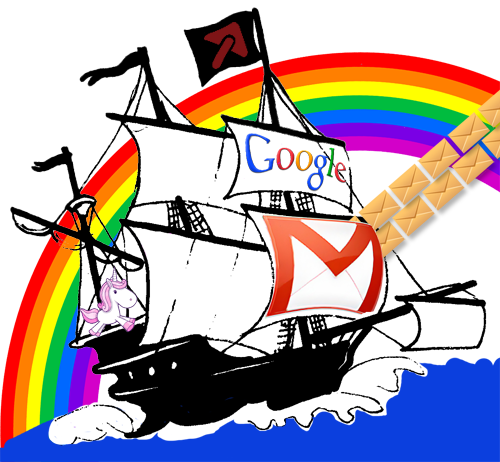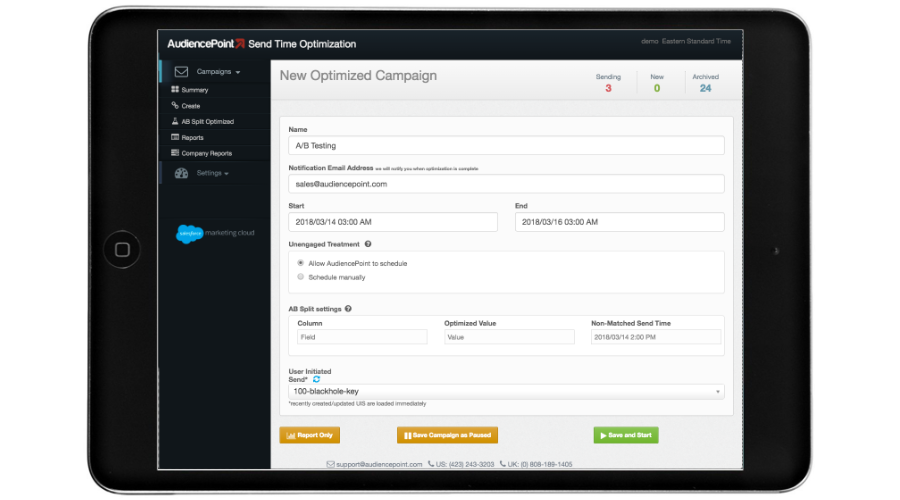AudiencePoint is thrilled to announce our new integration with Klaviyo! AudiencePoint is looking for partners to pilot our...
What Is The Difference Between An Email Campaign And A Drip Campaign?
Definition of an Email Campaign
Understanding the basics of an email campaign is fundamental for any email marketer. An email campaign typically involves sending a series of emails to a targeted group of recipients with the aim of achieving a specific objective, such as promoting a product, enhancing customer engagement, or driving sales. These emails are usually crafted around a central theme, message, or promotional offer and are sent out in a relatively short span of time, often within a few days or weeks. As part of a broader email marketing strategy, these campaigns are designed to align with overall marketing goals, ensuring consistency in messaging and maximizing impact.
Characteristics of a Drip Campaign
A drip campaign differs significantly in its approach and execution. Unlike standard email campaigns, drip campaigns are more personalized and strategically timed. A drip campaign involves sending a pre-scheduled series of emails to recipients over an extended period. The timing and content of these emails are designed to guide the recipient through a sales funnel or nurture them gradually over time. For example, a new subscriber might receive a series of welcome emails, followed by educational content and, finally, promotional offers. This step-by-step approach helps in building a long-term relationship with the customer.
Differences in Structure and Goals
When comparing a regular email campaign with a drip campaign, the structure and goals markedly differ. An email campaign is often goal-oriented with immediate objectives, such as a holiday sales push. In contrast, a drip campaign is more about long-term nurturing. The structured cadence of messages in a drip campaign allows for a seamless progression that educates, engages, and ultimately converts the recipient over time.
Examples of Email Drip Campaigns
To illustrate, let’s consider some examples of email drip campaigns. One example could be a series of onboarding emails that introduce new users to the features of a software application. Another scenario might involve a sequence of educational emails for new customers of a health supplement brand, guiding them on how to utilize the product effectively while gradually introducing additional products.
What Is The Difference Between Email Campaign And Email Automation?
Email Campaign Overview
An email campaign generally refers to a one-time set of emails that are sent to a targeted group of recipients. These campaigns are often initiated around a specific event, promotion, or announcement, and their goal is usually immediate action, such as making a purchase, registering for an event, or clicking a link. Typical examples include holiday promotions, product launches, or newsletters.
Email campaigns are designed to be attention-grabbing and compelling, as they aim to leverage a sense of urgency. These campaigns are usually pre-planned with specific messages tailored to trigger a response from the recipient. The effectiveness of these campaigns is often measured by metrics such as open rates, click-through rates, and conversions.
Introduction to Email Automation
Email automation, on the other hand, involves the use of software that allows email marketers to schedule and trigger emails automatically based on certain criteria or recipient actions. Email automation tools such as email drip campaign software can send messages at strategic times and frequencies. These tools not only help automate repetitive tasks but also personalize emails at scale.
Email automation can range from simple tasks like sending welcome emails to new subscribers to more complex tasks that involve multiple steps and conditional logic. For example, you can set up an email workflow that sends a discount code to users who have abandoned their cart, but only if they haven’t made a purchase within a certain timeframe.
Key Differences in Functionality
The primary difference between an email campaign and email automation lies in their functionality. While a campaign is a one-time or limited-time effort, automation is an ongoing process. Campaigns are usually manually triggered, whereas automation relies on predefined rules and algorithms to take action.
Another significant difference is in the level of personalization and engagement. With email automation, you can send highly personalized and relevant content to users based on their behavior and preferences. This can significantly increase user engagement and conversion rates. For instance, in an email drip campaign, which is a type of email automation, emails are sent at predetermined intervals to nurture leads over time.
Benefits of Email Automation
Email automation offers several advantages. First, it provides consistency. You can ensure that every subscriber receives timely, relevant emails without the need for manual intervention. Second, automation allows for better targeting and segmentation. By analyzing user behavior, you can tailor your messages to different segments for a more personalized experience.
Furthermore, automation saves time and resources. Once you set up the workflows, the system handles the rest, allowing you to focus on other important aspects of your marketing strategy. Lastly, the analytics and reporting capabilities of automation tools provide valuable insights into the performance of your campaigns, helping you optimize them for better results.
What Is The Difference Between Email Flow And Email Automation?
Understanding the difference between email flow and email automation is crucial for any email marketer looking to optimize their email marketing strategies. While both concepts are often used interchangeably, they have distinct purposes and functionalities that can influence your campaign’s outcomes.
Definition of Email Flow
Email flow refers to the sequence of emails sent to a subscriber over a period of time. This sequence is usually pre-planned and can include a variety of email types, such as welcome emails, promotional content, and follow-ups. The flow is designed to guide the subscriber through a specific journey, often aimed at converting them from leads to customers.
Automation in Different Email Flows
Email automation takes the concept of email flow a step further by using software to automatically send these pre-planned emails based on specific triggers or actions taken by the subscriber. For instance, signing up for a newsletter might trigger a welcome email, while abandoning a shopping cart could trigger a reminder email.
Email flows can include aspects like segmenting audiences, personalizing content, and adjusting send times based on user interactions. Automation ensures that these actions happen without manual intervention, providing a seamless experience for both the marketer and the subscriber.
Real-World Examples
Consider an e-commerce platform that uses an automated email flow for cart abandonment. The moment a user abandons their cart, the system triggers a series of emails reminding them of their pending purchase and possibly offering a discount. Another example could be a SaaS company using an automated email flow to nurture leads through a sequence of educational content and promotional offers.
Optimization of Email Automation
Optimizing your email automation involves continuously analyzing performance metrics such as open rates, click-through rates, and conversions. Using email automation software, you can A/B test different subject line content formats and send times to see what resonates best with your audience. Furthermore, integrating your email automation with CRM systems can provide deeper insights into customer behavior, allowing for more personalized and timely communications.
In conclusion, while both email flow and email automation play vital roles in email marketing, understanding how to leverage each effectively can significantly enhance your campaign’s success.
Are Drip Campaigns Automated?
In the realm of email marketing, automation is key to efficiency and scalability. The question that often arises is: Are drip campaigns automated? The short answer is yes. Drip campaigns are designed to be automated, delivering a series of well-timed and relevant emails to prospects or customers based on specific triggers or timelines.
Automation in Drip Campaigns
Automation in drip campaigns enables marketers to send out emails at defined intervals, ensuring that the messaging aligns with the recipient’s journey. This automation can be triggered by a range of actions, such as subscribing to a newsletter, abandoning a cart, or engaging with previous emails. Automation frees up valuable time, allowing marketers to focus on creating compelling content rather than manually managing email schedules.
Types of Drip Campaigns
There are numerous types of drip campaigns, each serving different marketing goals. Some common types include:
- Welcome Drip Campaigns: These introduce new subscribers to your brand, usually with a series of emails that share company values, best products, or key content.
- Onboarding Drip Campaigns: These help new users get started with your product or service, offering guidance and support through automated emails.
- Nurture Drip Campaigns: These are designed to build a relationship with potential customers, offering valuable content that guides them down the sales funnel.
- Re-engagement Drip Campaigns: These aim to win back inactive subscribers with special offers or engaging content.
Pricing and Software Options
The pricing of drip campaigns can vary widely based on the features and capabilities of the chosen email drip campaign software. Many platforms offer tiered pricing models that cater to different levels of service, from basic automation to advanced capabilities like AI-driven personalization and comprehensive analytics. It’s crucial to evaluate your needs and budget when choosing the right software.
Efficiency and Effectiveness
An automated drip campaign is not just efficient but also highly effective in nurturing leads and converting them into loyal customers. By delivering the right message at the right time, you can significantly enhance engagement and drive conversions.
Experience unparalleled efficiency with AudiencePoint’s cutting-edge email marketing solutions. Our platform’s advanced automation capabilities streamline your drip campaigns to target the right audience at optimal times. Unlock the full potential of your email marketing strategy with AudiencePoint and drive up your ROI. Contact AudiencePoint Today!





